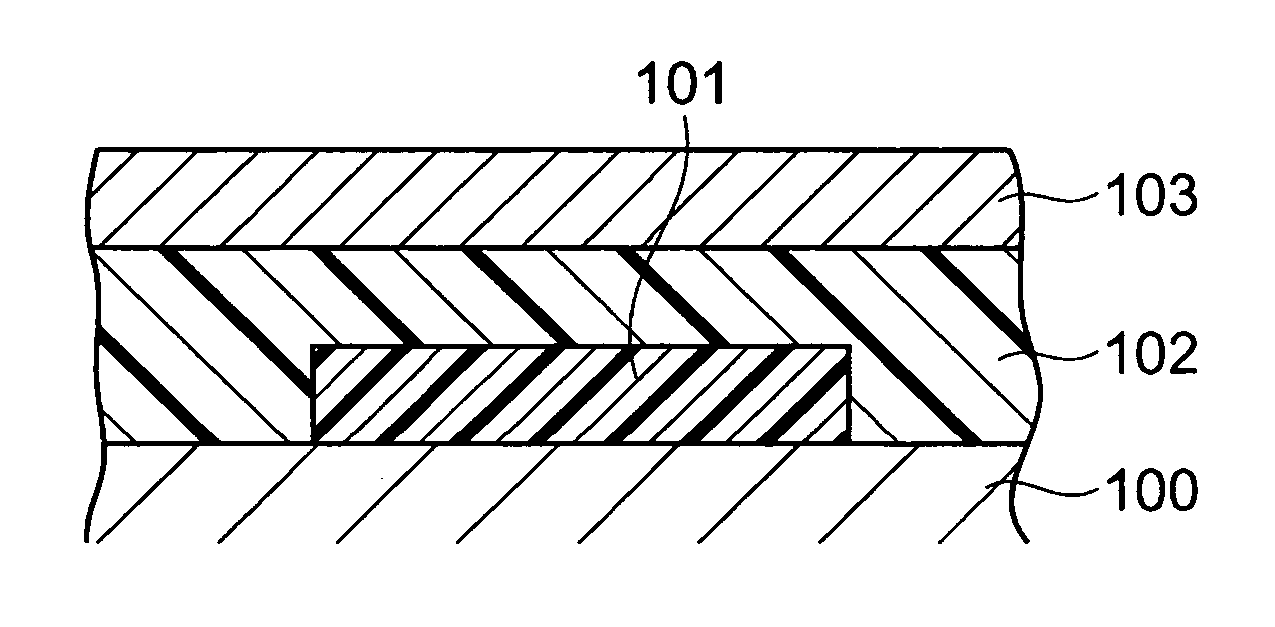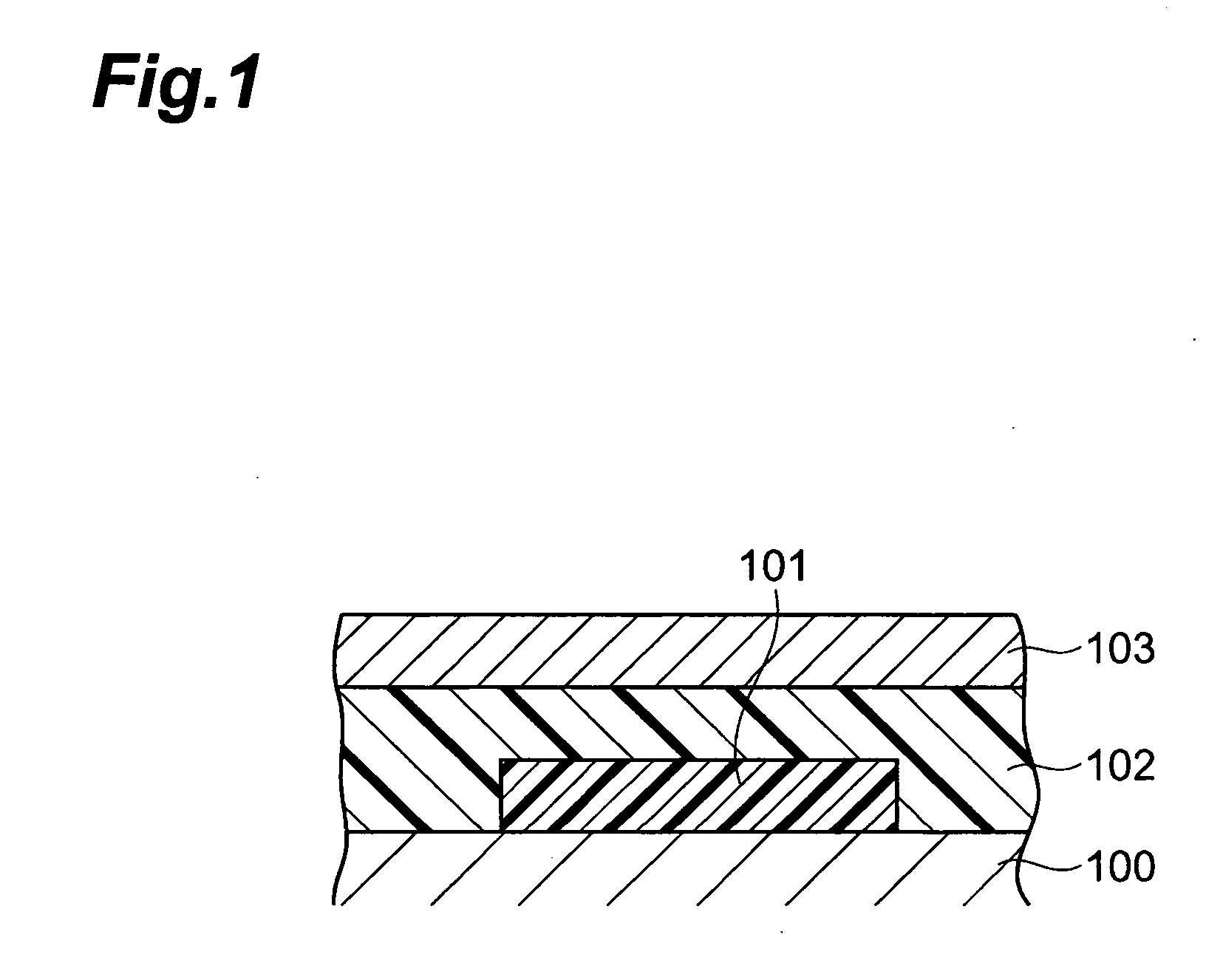Borazine-based resin, and method for production thereof, borazine based resin composition, insulating coating and method for formation thereof, and electronic parts having the insulating coating
a technology of borazine-based resin and borazine, which is applied in the direction of synthetic resin layered products, chemistry apparatus and processes, transportation and packaging, etc., can solve the problems of affecting the reliability of the device using the insulating film, the adaptability of the process, and the film peeling of the film more readily, so as to achieve effective recovery, high reactivity, and easy filtering
- Summary
- Abstract
- Description
- Claims
- Application Information
AI Technical Summary
Benefits of technology
Problems solved by technology
Method used
Image
Examples
production example 1-1
(Production of Borazine-Based Resin Composition 1-1)
[0168] After dissolving 0.50 mmol of B,B′,B″-triethynyl-N,N′,N″-trimethylborazine and 0.50 mmol of p-bis(dimethylsilyl)benzene in 4 ml of ethylbenzene, 5% platinum-alumina (0.1 mmol as platinum) was added and the mixture was stirred for 7 days under nitrogen at 50° C. A portion of the reaction solution was sampled and analyzed by gas chromatography (GC), confirming disappearance of the peaks for the B,B′,B″-triethynyl-N,N′,N″-trimethylborazine and p-bis(dimethylsilyl)benzene monomers. The molecular weight of the product as determined by GPC analysis (based on standard polystyrene) was Mn=2500 (Mw / Mn=2.0). The reaction solution containing the platinum-alumina catalyst was filtered with a disposable membrane filter unit by ADVANTEC to obtain a borazine-based resin composition 1-1.
production example 1-2
(Production of Borazine-Based Resin Composition 1-2)
[0169] After dissolving 0.50 mmol of B,B′,B″-triethynyl-N,N′,N″-trimethylborazine and 0.50 mmol of 1,3,5,7-tetramethylcyclotetrasiloxane in 4 ml of ethylbenzene, 5% platinum-alumina (0.1 mmol as platinum) was added and the mixture was stirred for 7 days under nitrogen at 50° C. A portion of the reaction solution was sampled and analyzed by gas chromatography (GC), confirming disappearance of the peak for the B,B′,B″-triethynyl-N,N′,N″-trimethylborazine monomer. The molecular weight of the product as determined by GPC analysis (based on standard polystyrene) was Mn=3000 (Mw / Mn=2.2). The reaction solution containing the platinum-alumina catalyst was filtered with a disposable membrane filter unit by ADVANTEC to obtain a borazine-based resin composition 1-2.
production example 1-3
(Production of Borazine-Based Resin Composition 1-3)
[0170] After dissolving 0.50 mmol of B,B′,B″-triethynyl-N,N′,N″-trimethylborazine and 0.50 mmol of p-bis(dimethylsilyl)benzene in 4 ml of ethylbenzene, the polymer-supported platinum catalyst described in Polymer Journal, 34, 97-102(2002) (Polym-CH2SH / H2PtCl6) (0.01 mmol as platinum) was added and the mixture was stirred for 5 days under nitrogen at 50° C. A portion of the reaction solution was sampled and analyzed by gas chromatography (GC), confirming disappearance of the peaks for the B,B′,B″-triethynyl-N,N′,N″-trimethylborazine and p-bis(dimethylsilyl)benzene monomers. The molecular weight of the product as determined by GPC analysis (based on standard polystyrene) was Mn=3800 (Mw / Mn=2.5). The reaction solution containing the polymer-supported platinum catalyst was filtered with a disposable membrane filter unit by ADVANTEC to obtain a borazine-based resin composition 1-3.
PUM
| Property | Measurement | Unit |
|---|---|---|
| Fraction | aaaaa | aaaaa |
| Pressure | aaaaa | aaaaa |
| Electric charge | aaaaa | aaaaa |
Abstract
Description
Claims
Application Information
 Login to View More
Login to View More - R&D
- Intellectual Property
- Life Sciences
- Materials
- Tech Scout
- Unparalleled Data Quality
- Higher Quality Content
- 60% Fewer Hallucinations
Browse by: Latest US Patents, China's latest patents, Technical Efficacy Thesaurus, Application Domain, Technology Topic, Popular Technical Reports.
© 2025 PatSnap. All rights reserved.Legal|Privacy policy|Modern Slavery Act Transparency Statement|Sitemap|About US| Contact US: help@patsnap.com



